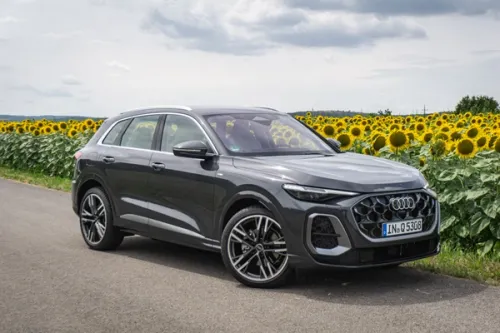@Geneva: Never Get Bulli'ed
In this vehicle, Volkswagen is finishing what it started in 2001: ten years ago, the vision of a new Bulli led to an unforgettable concept vehicle known as the Microbus.


In this vehicle, Volkswagen is finishing what it started in 2001: ten years ago, the vision of a new Bulli led to an unforgettable concept vehicle known as the Microbus. But some visions need to mature before they yield something new. Now, the time is right for this vision. That is because the concept was sharpened, and the necessary, sustainable
technologies are now at hand. More compact and affordable than the
earlier concept vehicle, it is now being shown in Geneva. The new
Bulli – powered by an electric motor and fitted with six seats and infotainment control via iPad.
This concept has the potential to establish a new, fifth brand of people carrier next to the Caddy, Touran, Sharan and its large counterpart – the Caravelle. The Bulli could even become an icon like the T1 Samba that still trades at extremely high prices today – one of those few vehicles that simply do not fade with time.
Thanks to highly advanced drive technologies, the Bulli being shown in
Geneva is what is referred to as a ‘zero emissions vehicle’, because the concept is electrically powered. Zero emissions at the tailpipe. The Bulli’s electric motor outputs 85 kW of power and an impressive 270 Newton metres of torque. As is usual with this type of drive, its maximum forces are generated from standstill. The silent motor is supplied with energy from a lithium-ion battery with a maximum storage capacity of 40 kWh.
This electrifying combination enables driving ranges of up to 300 km
– a high value for an electric car. When the Bulli’s battery is charged at an “electric refuelling station” specially designed for electric vehicles, the charging process takes less than one hour.
The new Bulli accelerates from 0 to 100 km/h in 11.5 seconds, and its
top speed is 140 km/h (electronically limited). Its range and driving
performance not only make the compact vehicle ideal for short
distances; but also ideal for most commuters and recreational activities with zero tailpipe emissions.
Naturally, the concept can also incorporate Volkswagen’s extremely
efficient petrol and diesel direct injection engines as alternative drives.
Engines with 1.0 or 1.4 litre displacement that are fuel efficient yet
strong; this is downsizing by the book. Ideal for anyone who wants to
cover maximum distances with minimal fuel consumption.
Without the Dutch Volkswagen importer Ben Pon, the T1 might not
have existed, and of course neither would the Bulli concept vehicle
at Geneva. That is because Pon was the person who on 23 April, 1947,
sketched a picture of a compact bus in his notebook. Actually, the
Dutchman’s drawing was a simple side view of a radically shortened
public omnibus placed over the wheelbase of a Beetle with an “m” for
“motor” written on it. That was it. The world’s first van was born. Great ideas usually just take a few strokes of the pen, but then they require a dedicated effort to implement them. Volkswagen designers took this sketch and created the bus that became an automotive icon with the characteristic “V” in front.
The Bulli concept vehicle now follows in the footsteps of the original
bus and demonstrates the concept of maximum space utilisation with
the characteristic “V” with VW logo at the front end and the cleanest
of proportions. In the process, the concept vehicle’s design follows
the maxims of the new Volkswagen “design DNA.” Retro? Hardly. It is
a Volkswagen!
Credits: wilswong


Get the Best Price for your used car
from 500+ dealers in 24 hours

- Convenient and Hassle-Free
- Consumer Protection
Transparent Process
With No Obligation








